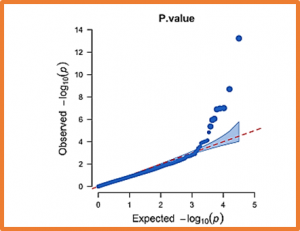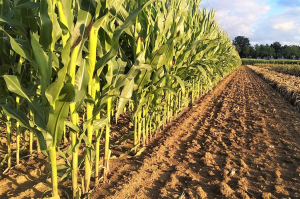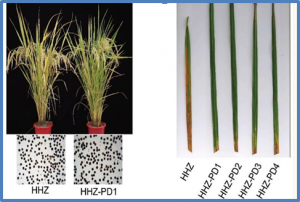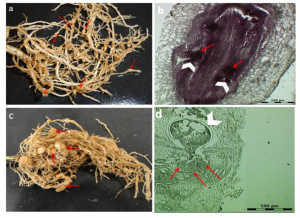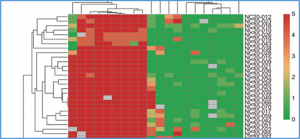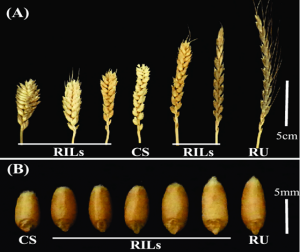Soybean rust caused by Phakopsora pachyrhizi is one of the most important foliar diseases of soybean [Glycine max (L.) Merr.]. Although seven Rpp resistance gene loci have been reported, extensive pathotype variation in and among fungal populations increases the importance of identifying additional genes and loci associated with rust resistance. One hundred and ninety-one soybean plant introductions from Japan, Indonesia and Vietnam,
Rice is considered one the most important plants globally because it is a source of food for over half the world's population. Like other plants, rice is susceptible to diseases that may affect the quantity and quality of produce. It sometimes results in anywhere between 20-40% crop loss production. Early detection of these diseases can positively affect the harvest, and thus farmers would have to be knowledgeable about the various disease and how to identify them visually
Maize is a widely grown cereal crop in India and ranks third to wheat and rice in production (https://iimr.icar.gov.in). During a field survey in Kharif season in 2018, foliar chlorosis at the base and middle of leaves, and twisted top symptoms were observed in 40-50 days old maize plants in Belagavi district, Karnataka, India. Again during Kharif season in 2021, similar symptoms were observed on commercial maize hybrids and sugarcane at Agricultural Research Station, Sankeshwar Karnataka.
The metabolomic changes induced by the phytotoxic metabolite in a ShB susceptible rice cultivar were elucidated by gas chromatography-mass spectrometry analysis and compared with that of the pathogen to identify rice metabolites targeted by the phytotoxin. The profiles of about 29 metabolites with various physiological roles in rice plants have been identified worldwide. Unsupervised and supervised multivariate chemometrics (principal component analysis and partial least squares-discriminant analysis)
xa13 is a recessive pleiotropic gene that positively regulates rice disease resistance and negatively regulates rice fertility; thus, seriously restricting its rice breeding application. In this study, CRISPR/Cas9 gene-editing technology was used to delete the Xa13 gene promoter partial sequence, including the pathogenic bacteria-inducible expression element. Rice with the edited promoter region lost the ability for pathogen-induced gene expression without affecting background gene expression in leaves and anthers,
Meloidogyne javanica is among the most important nematodes that damage soybean, and although genetic resistance is the ideal control measure, there are few cultivars described as resistant among those recommended for southern Brazil. The objective of this work was to evaluate the reaction of soybean cultivars to M. javanica. The inoculum of nematodes (Est. J3) was obtained from soybean plants and inoculated into tomato plants cultivar "Santa Cruz".
Receptor-like kinases (RLKs) are a large group of pattern recognition receptors (PRRs) and play a critical role in recognizing pathogens, transducing defense signals, and mediating the activation of immune defense responses. Although extensively studied in the model plant Arabidopsis, studies of RLKs in crops, including soybean, are limited. When a BAK1-interacting receptor-like kinase (BIR1) homolog (referred to as GmBIR1 hereafter) was silenced by the BPMV (Bean pod mottle virus)-induced gene silencing (BPMV-VIGS)
Rice blast is the most destructive disease threatening stable rice production in rice-growing areas. Cultivation of disease-resistant rice cultivars is the most effective way to control rice blast disease. However, the rice blast resistance is easy to breakdown within years by blast fungus that continually changes to adapt to new cultivars. Therefore, it is important to continuously monitor the incidence of rice blast disease and race differentiation of rice blast fungus in fields
Many transcription factors (TFs) in animals bind to both DNA and mRNA, regulating transcription and mRNA turnover. However, whether plant TFs function at both the transcriptional and post-transcriptional levels remains unknown. The rice (Oryza sativa) bZIP TF AVRPIZ-T-INTERACTING PROTEIN 5 (APIP5) negatively regulates programmed cell death and blast resistance and is targeted by the effector AvrPiz-t of the blast fungus Magnaporthe oryzae.
Brassinosteroids (BRs) control many important agronomic traits and therefore the manipulation of BR components could improve crop productivity and performance. However, the potential effects of BR-related genes on yield-related traits and stress tolerance in wheat (Triticum aestivum L.) remain poorly understood. Here, we identified TaD11 genes in wheat (rice D11 orthologs) that encoded enzymes involved in BR biosynthesis.


 Curently online :
Curently online :
 Total visitors :
Total visitors :
